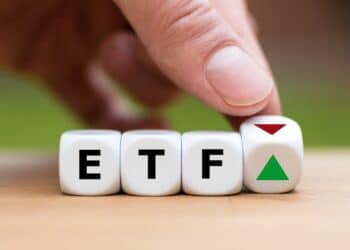News headlines on Australia’s fixed income market tend to focus on how specific issues, such as how the health of the country’s economy and the Reserve Bank of Australia (RBA) policy, determine the direction of the country’s government bond yields.
In our view, these domestic issues are critical. We think the RBA will likely continue to take a more cautious approach to interest-rate hikes because the country’s households are struggling.
However, investors unfamiliar with the Australian fixed income market may be surprised to hear the drivers of performance are as much global as they are local. For example, the direction of US Treasury yields tends to drive Australian longer-term government bond yields to a large degree. In addition, global issuers make up a substantial proportion of the Australian corporate bond market.
Here, we highlight three things for investors to think about when it comes to viewing the Australian fixed income market through a global lens.
Australian Corporate Credit Market Is a Bit of a Misnomer
The Australian corporate credit market generally moves closely in sync with global peers. The proportion of non-Australian borrowers in the Bloomberg AusBond Credit 0+Yr Index is approximately 50 per cent, higher when compared with other developed market indices. Large global names, such as Verizon and Apple, have raised money in the Australian dollar corporate bond market.
The market is also attractive to many global investors due to its liquidity and financial architecture. Increasingly, Asian-based investors, for example, are becoming a stable part of the Australian dollar investor base, which has led to the regionalisation of the market.
As a result of these factors, the links between global investment-grade markets and Australia are quite strong. For example, the softening of global demand for corporate bonds and emerging market debt in the latter part of 2018 saw a commensurate widening in Australian credit spreads.
We see the Australian corporate credit market as a global market denominated in Australian dollars. This concept can be difficult for many investors to wrap their heads around. For us, it means a global perspective is essential for success, even in the local market.
Past Global Stock-Bond Relationship Might Not Hold in the Future
There is a strong perception that stocks and bonds always move in opposite directions.
The inverse relationship between bonds and equities has broadly worked over the last 30+ years, since the 1980s. But we implore investors to be cautious about relationships extrapolating forward. Our correlation analysis of almost 150 years of US bonds versus US equities has shown that the relationship between the sectors is unstable and can be positive for extended periods.
In short, regimes are important.
Much of the last 30+ years can be characterised as a disinflationary regime. However, something changed just on 10 years ago with the global financial crisis (GFC). Central banks unleashed previously unimaginable policies.
First, monetary policy entered new territory with zero and, in some cases, negative interest-rate policy. Second, central bank balance sheets swelled as quantitative easing (QE) programs provided a critical backstop function for financial markets.
Enter the QE regime. After several years of unconventional monetary policy and interest rates falling to record low levels, both global bonds and equities have delivered strong returns (i.e. a positive correlation) for much of the last 10 years. Now, as central banks begin to unwind balance sheets, we believe it is unlikely that the previously inverse relationship between bonds and stocks will be restored.
If central banks can extricate themselves from their quantitative program burdens over the next 10 years or so, then it will likely be in an environment of rising growth and heady inflation rates. Historically, inflationary regimes have been associated with positive correlations between bond and equity markets.
This is important for Australian investors as, to some degree, the market imports global monetary conditions. A sustained period of very low interest rates globally has drawn added interest to Australian bonds. Equally, a move higher in global rates could see a waning in demand and a fall in bond prices.
Consequently, we think we could see a change in the behaviour of bond yields and prices in future cycles. We encourage investors to consider what an investment environment such as this might mean for portfolio construction.
Market Liquidity Is Not What It Used to Be
In the past decade, central bank QE led to excessive liquidity and extended the credit cycle. As a result, many investors had shifted into riskier forms of fixed income for higher yields.
During that time, there have been some brief periods—typically six to nine weeks—when financial markets have come under pressure as nervous investors divested their riskier positions. Even in these short episodes, the traditional market makers (financial intermediaries) had not been able to absorb the supply of risky assets that hit the market.
In our view, despite Australia’s relatively high-quality corporate credit market, professional investors will likely not be able to play a supporting role should market sentiment deteriorate more deeply. We think this could especially be true if short spikes in volatility turn into a prolonged downturn.
Investment Implications
We think the global corporate credit markets could face obstacles in the year ahead. The profit cycle is slowing and some sectors are facing particular pressures.
While we see pockets of value in Australian corporate bonds, we are highly selective and expect to be more defensive in the period ahead.
While corporate credit securities can provide additional yield to portfolios, it is important not to fall into the trap of putting all your eggs in one basket. Historically, credit cycles show portfolios are likely to be exposed to similar risks by having a high correlation to equities as corporate bonds during inevitable periods of cyclical downturns and market distress.
In addition to corporate credit’s high correlation with equities, credit spreads—or, the incremental yield paid for the additional risk of investing in credit—appear to be approaching relatively expensive valuations. As chart one below shows, corporate credit spread levels have returned to pre-GFC levels, begging the question, are investors being rewarded enough for the additional level of risk?
In this environment, we favour areas like utilities and infrastructure, where there is a lot of government support and fairly regular cash flows. We have also more recently begun to favour Australian state government bonds and generally a move higher in quality.
Investors seem to be wary of the softening domestic environment as the Australian economy faces challenges around housing and a moderating Chinese economy. We see risks in sectors tied to the Australian housing industry and consumer discretionary spending which keep us very cautious on banks and mortgage-backed securities.
We are also finding some attractive opportunities across Asian corporate credit markets which experienced some challenges in 2018. Supply was very strong and, at the same time, rising rates and concerns over China and trade weighed on sentiment, allowing the accumulation of positions from some of the more developed parts of the Asian universe at what we consider to be attractive valuations.
Andrew Canobi is director of Australian fixed income at Franklin Templeton Australia





